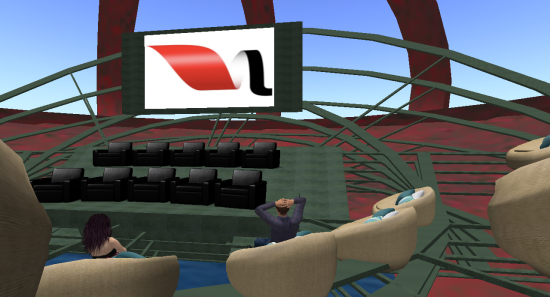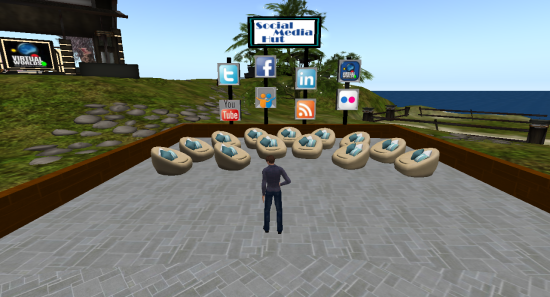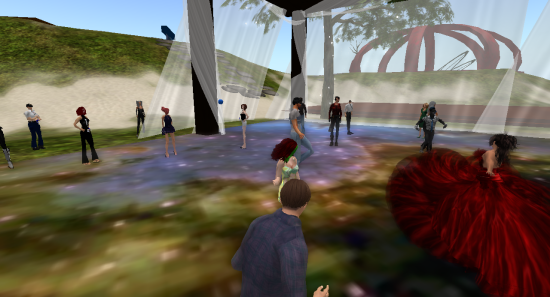The Virtual Worlds Best Practices in Education (VWBPE) conference began today, and will continue for the next three days. The conference will take place across three different virtual worlds and will host presentations in Second Life, OpenSim’s Jokadia grid, and in Cloud Party. The majority of presentations and social events are in Second Life.
If you have a passion for virtual worlds, as I do, the topics covered will help shine a spotlight on the various possibilities for virtual worlds and education.

At an international panel discussion last night, innovative educators shared their achievements and challenges that they face with enhanced learning technology, as well as their vision of future collaborative learning in virtual worlds and games.
There was a discussion of teaching new languages within the Second Life environment. The panel was very positive about using virtual worlds to learn a new language. Students are more successful in the virtual world because students are much more open speaking thru an avatar. The same student speaking in front of a live audience would be too shy to speak.
While educators will gain the most from the conference there are panels with a wide range of subjects, ranging from the performance aspect of teaching in a virtual classroom, and other panels discussing what is the ideal virtual arena to have the class. You can do things in a virtual world which are impossible in real life. In the virtual world you can enter dangerous environments or inaccessible environments — the ocean floor, for example.

While the focus of this conference is on virtual world education, at one point or another, everyone is involved in training within your organization or mentoring new employees. How can virtual worlds aid all of us with the training and education within our organizations?
The student creates a personal avatar and enters a new world and soon the person forgets the world is virtual. Learning is more immersive.
Make first impressions count
Several members of a panel discussion I attended stated that the initial meeting in the virtual worlds was critical to learning. Once the class was engaged, the students made greater progress. If the teacher tries to move too fast, the class never buys in. Therefore the planning of the first class, and the teacher that can get the early commitment of the class to the new world will be much more successful.
My background includes working a site called Stagecoach Island. This build was sponsored by Wells Fargo to teach middle school students about banking and finance. The teachers who were present in the class, and created avatars with the class were much more successful in getting the class to progress through the banking lessons.
I am most interested in how corporations will have virtual campuses and training. Once education has created successful scripts and models to follow, business will follow. We are just beginning to understand the power of education and training with a virtual world environment.

Tomorrow’s sessions start at 6 a.m. Pacific time, with events lasting until the evening party starts at 6 p.m.
Thursday’s highlights
Andragons, The Shape of Learning
William Krebs (“AgileBill Firehawk”) and John “Pathfinder†Lester will talk about how to design virtual classrooms that aid learning without needless distractions.
The Advantages of Live Performance and Life Lecturing in the 3D Environment
Juliane Gabriel (“Jaynine Scarborough”) will talk about virtual lectures as a form of public performance which can be one of the most successful ways to hook people and connect them as a group.
Using Virtual World Simulators (Second Life) in Human Services Course Assignments
Scott P. Anstadt (“Regis Roubodoo”) and Belinda Bruster will talk about integrating assignments across courses in the human services curriculum in higher education. The virtual experience brings the assignment to life, increasing student engagement and sensitivity.
- OpenSim conference starts Saturday - September 5, 2013
- Education conference spans three platforms - July 24, 2013
- 5 lessons in virtual training from the latest MOSES test - July 7, 2013
